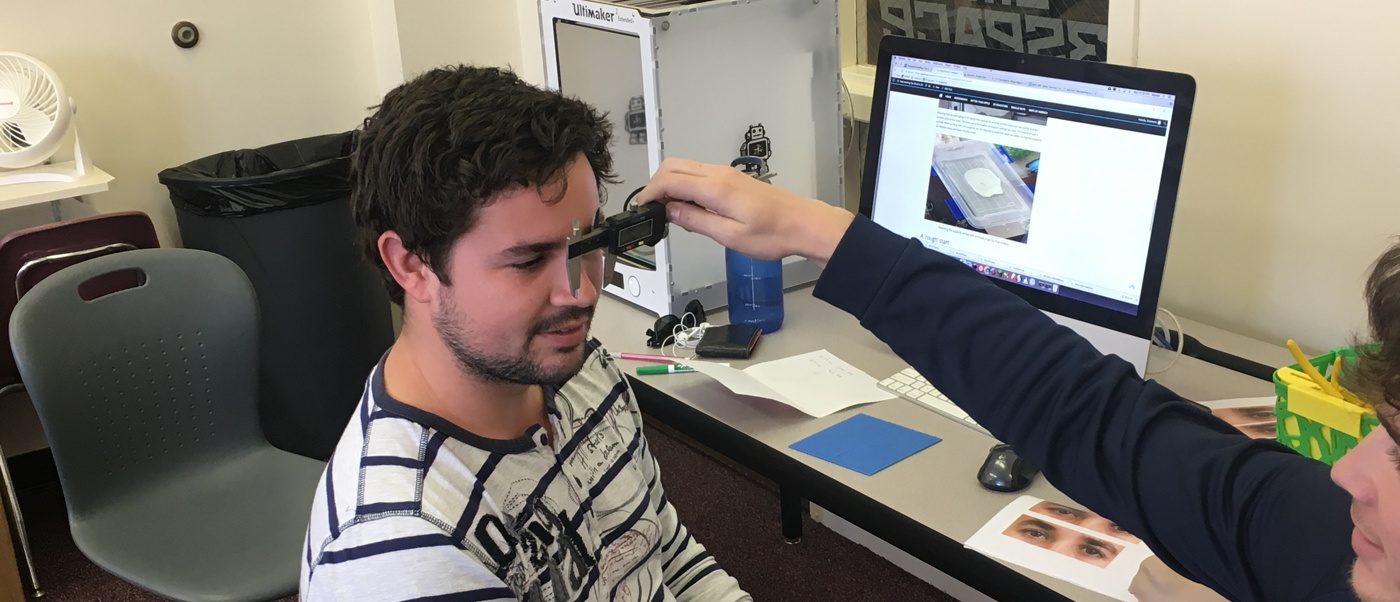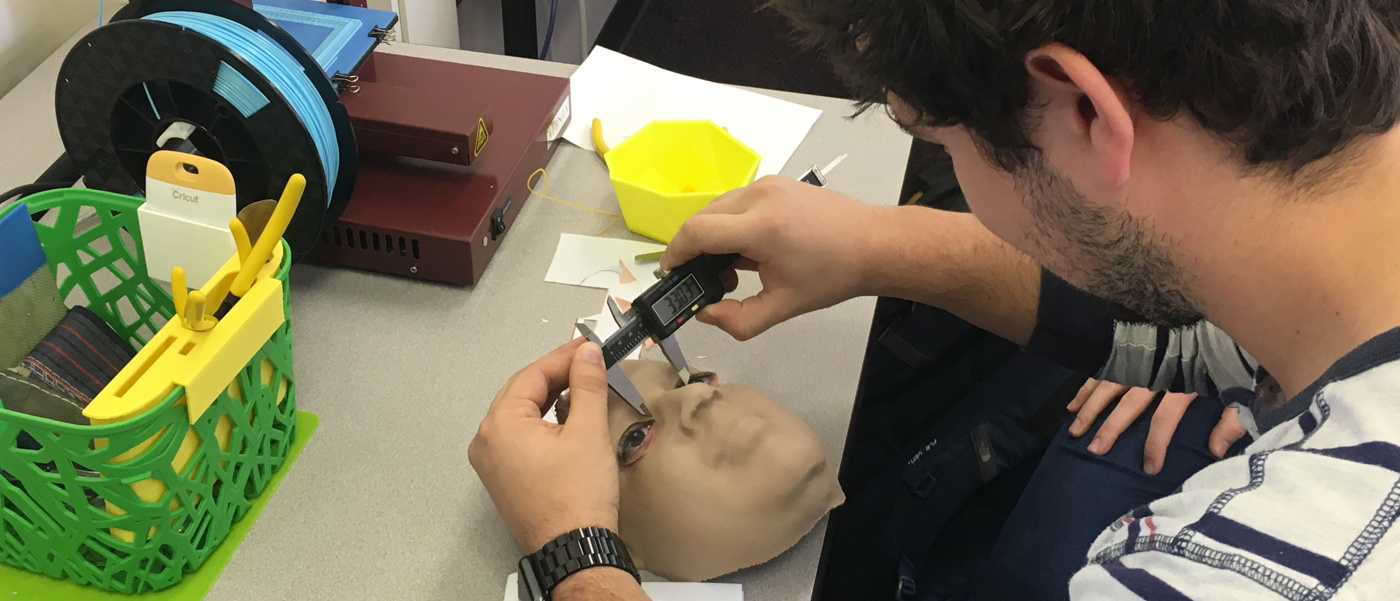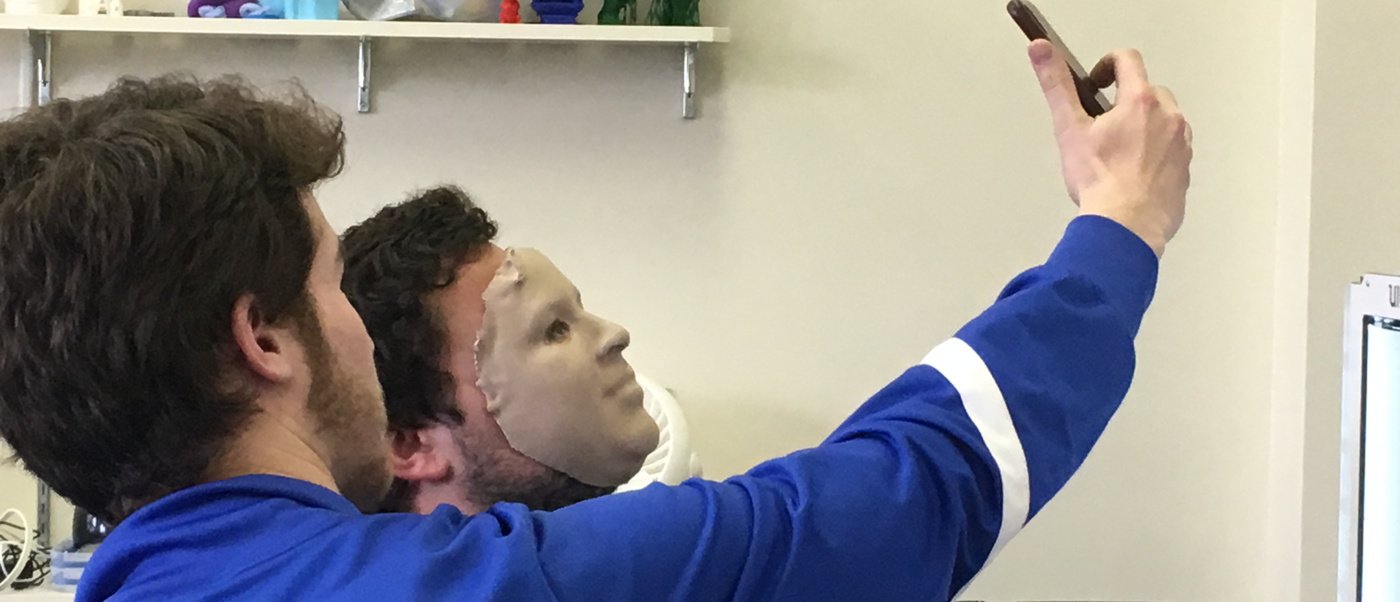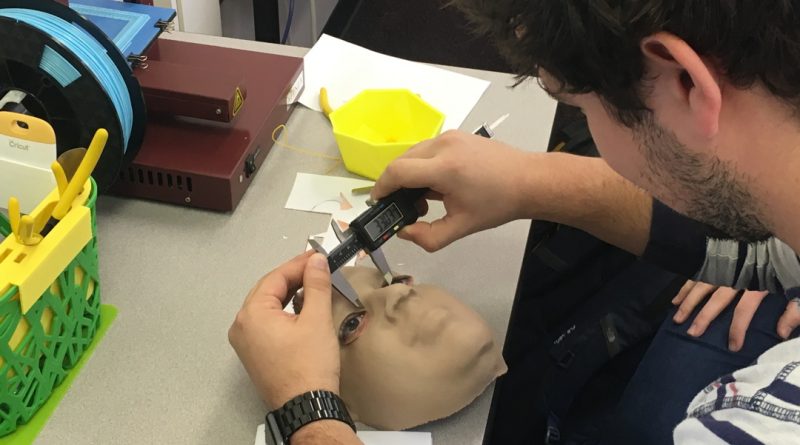Inching Closer
A Closer Scale
Once we were able to print out detailed pictures of James’ eyes, it occurred to us that it may be possible that the iPhone’s software could be measuring the distance between James’ facial features. We set out to establish a ratio that we could use on our new mask. Utilizing calipers that Dr. Taalman provided us, we set to measuring the distance between the inner corners of James’ eyes. We also used the measurement the wide part of his nose as another point of reference for our new mask.

Face Painting
Over the weekend, we took our newest mask with its rough surface, and painted the mask. With a quick trip to the paint department in Home Depot, we managed to purchase a paint that was close to James’ actual skin color. With the mask painted, all we needed to do was add the 2D printed eyes.
When it came time to add the eyes, we cut our prints down to the size of the area just larger than the eyelids. We felt as though this size would be sufficient to trick the facial recognition software. As seen below, the size of the pieces of paper allow the appearance of the eyes to fit in the socket of the mask.


New Mask, Same Results
Unfortunately, after weeks of hard work on this newest mask, there is still plenty of troubleshooting to perform. Once again, the iPhone software recognizes the mask as a face but not as James’ face.
Looking forward, we intend to expand the surface area of the paper that we used for the eyes so that they will include the eyebrows and upper cheeks. We also intend to devise a way to make the paper conform to the mask more seamlessly so the corners of the paper are not sticking out quite as much. We also intend to start our final presentation video where we will be able to show our progress over the course of the semester in a quick and concise format.


